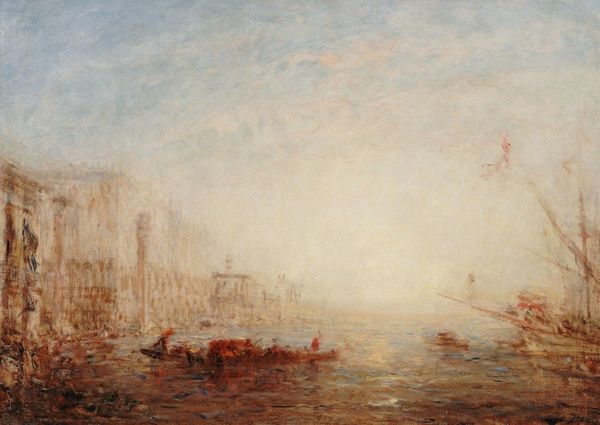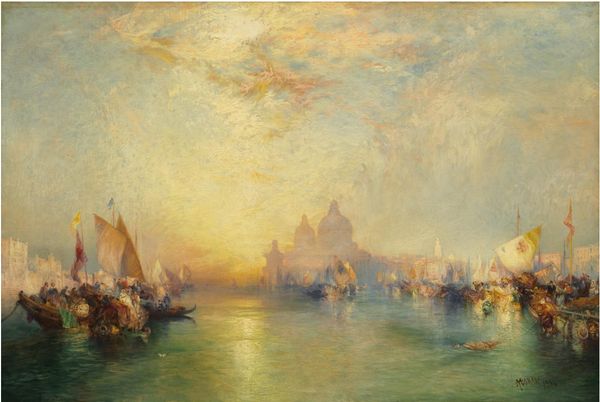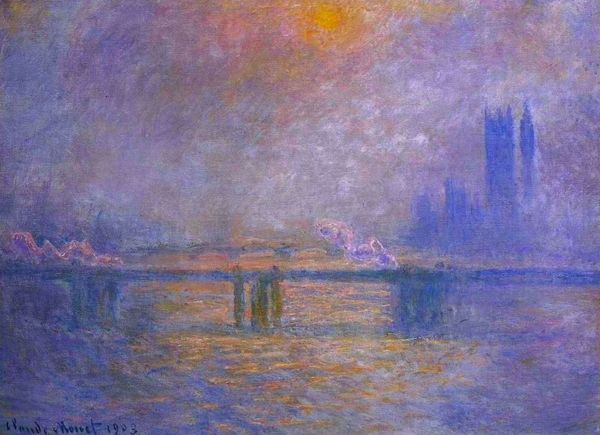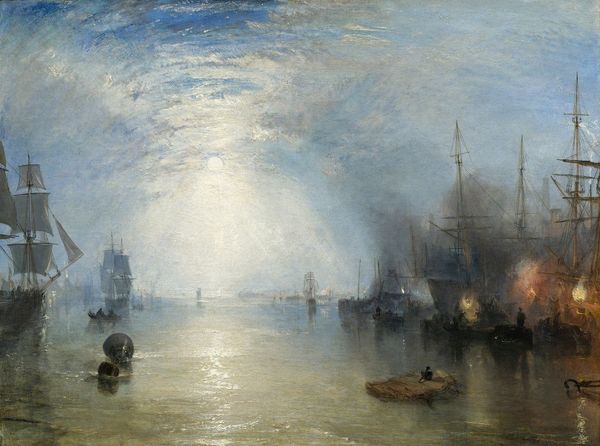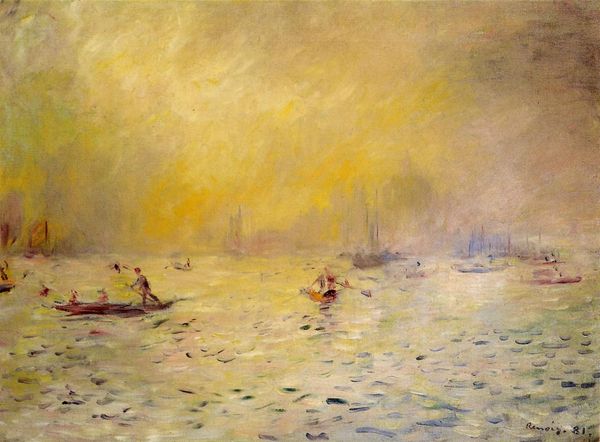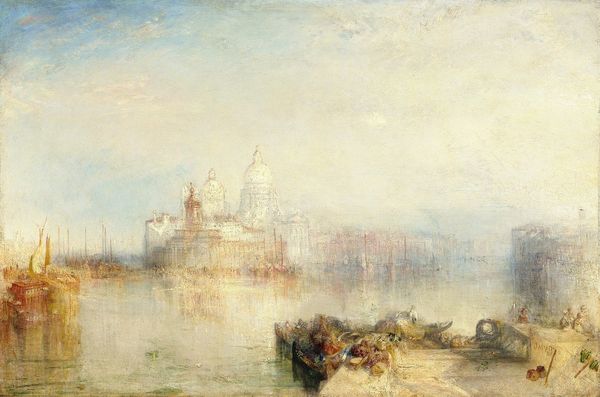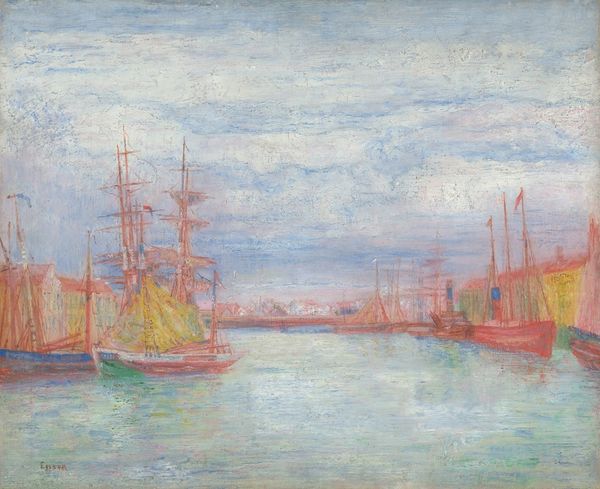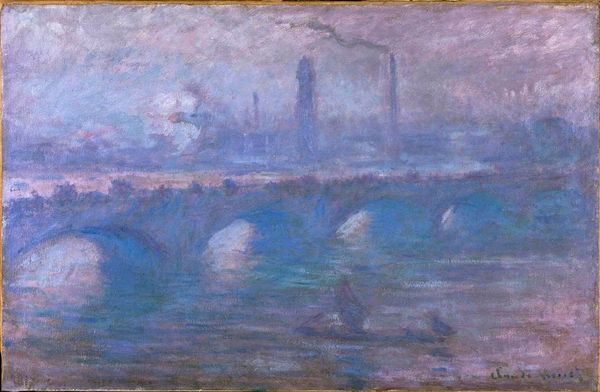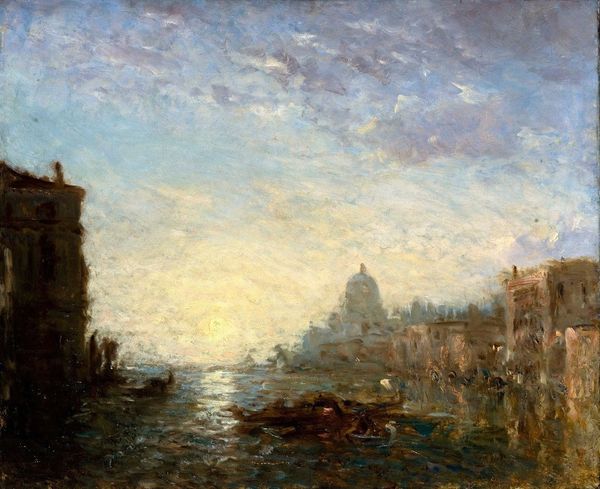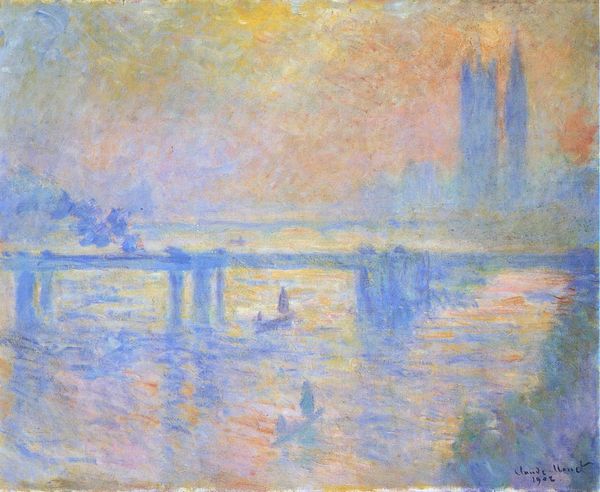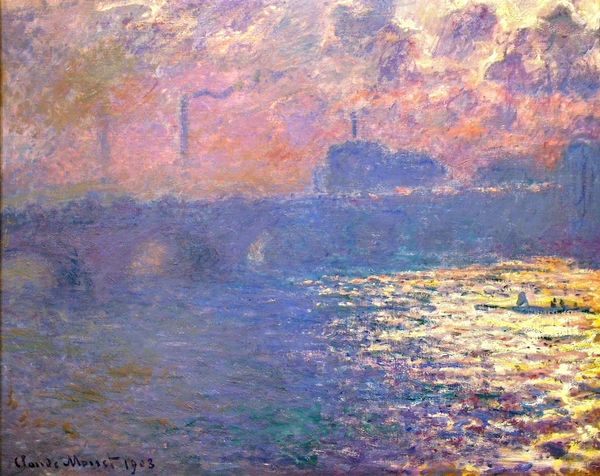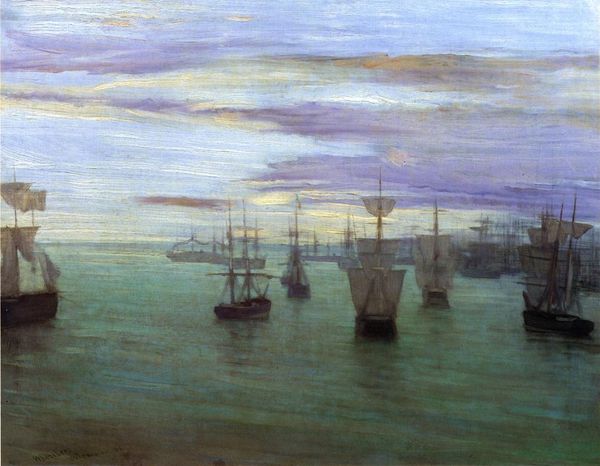
Copyright: Public Domain: Artvee
J.M.W. Turner created this work, "Approach to Venice," using oil paints to capture the essence of the city. The brushstrokes are applied with a free hand, not meticulously, and the pigments blend atmospherically. The material qualities of oil paint – its fluidity and capacity for layering – are central to the picture’s effect, as the light itself seems to be made of paint. Turner was celebrated for his atmospheric effects, which here dissolve the boundaries of architecture into an ephemeral vision. This approach reflects a broader shift in art history, from exact representation towards the exploration of perception and feeling. We can think about this painting as a kind of industrial product, too. The paints themselves were ground and processed, then brought to market for Turner to use. The canvas, stretched and primed, also represents a whole system of labor. Turner's art was made possible by these networks of production and consumption, even as he focused on the fleeting beauty of Venice. By considering the materiality and making of this artwork, we gain a deeper appreciation for the layers of meaning it holds.
Comments
No comments
Be the first to comment and join the conversation on the ultimate creative platform.
